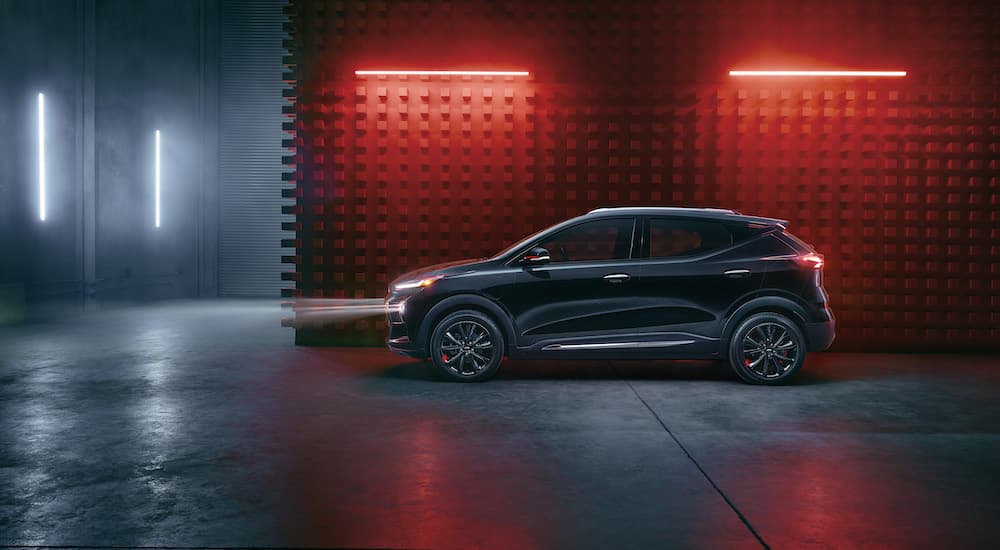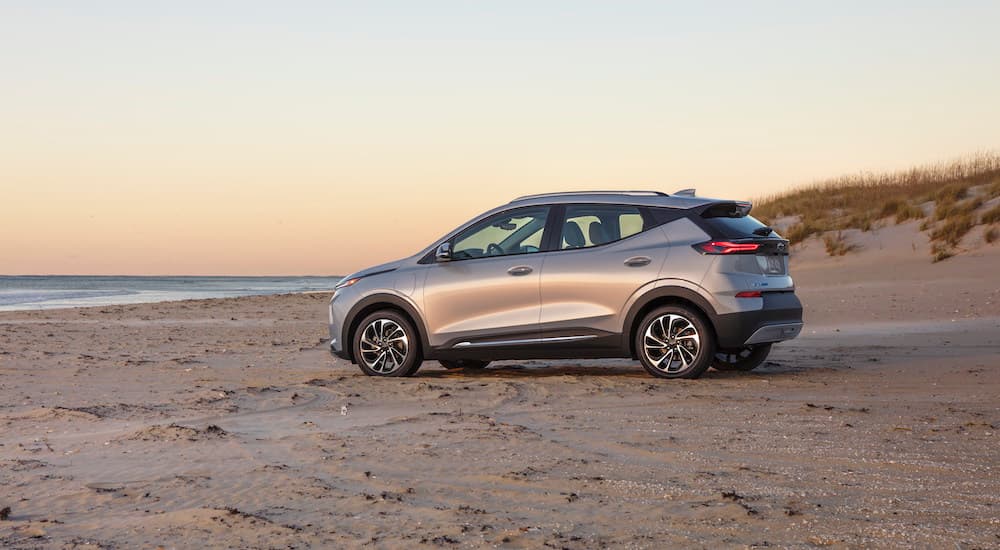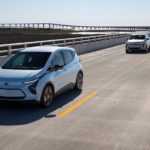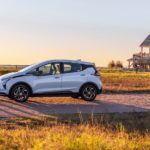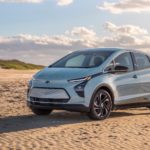Today, it seems that more and more manufacturers are joining the race to add a variety of attractive and diverse electric vehicles to their lineup. Consumers want to see that manufacturers of everything from cars to clothing to furniture are paying attention to the environment and doing their part. And, of course, with the average passenger vehicle emitting 4.6 metric tons of carbon dioxide per year, cars are some of the greatest offenders when it comes to climate change.
Several big names in the auto industry have acted as great role models to others. If big brands can go green, then anyone can. Chevrolet proved it with EVs like the 2023 Chevy Bolt EUV, Cadillac has entered the EV game with the 2023 Cadillac Lyriq, and Ford is even selling an electric version of its F-150 pickup truck. From luxury brands to more commercial-oriented ones, car manufacturers are taking the EV route. Maybe you should, too.
All of that said, old habits die hard. Even if nobody loves pulling over for gas, it’s what you know. It’s tough to adjust to a new way of life. And perhaps you’ve felt that the price tags on some EVs don’t make them worth their green benefits. So, if you need a little more encouragement, here are seven more benefits of going electric, including some data about the world of EVs that might show you why soon enough, it’ll be the only way to go.
#1 – Charging Stations Are Popping up Everywhere
If you’re worried you’ll struggle to find a charging port for your EV, you shouldn’t be––especially if you live in certain areas. The state of California has built nearly 7,000 charging points to date. New York is a close second, with 6,050 charging ports. Florida has 5,500 ports, and Texas has 4,793. Many other states have several thousand charging ports, including Washington, Georgia, Massachusetts, and Colorado. Hopefully, the rest of the states will take a cue from these trendsetters and add more charging ports so that EV drivers can enjoy care-free travels throughout the country.
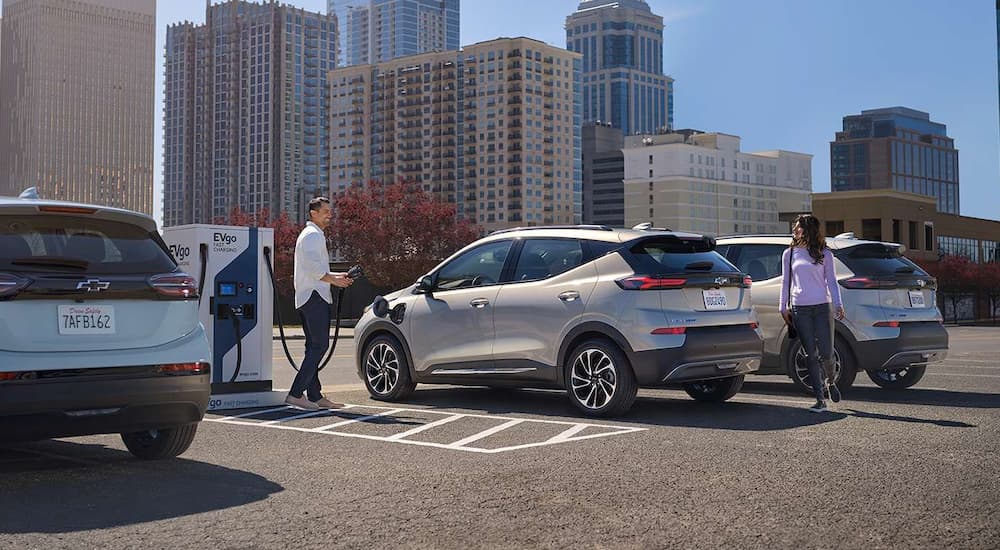
#2 – Installing a Home Charging Station Isn’t Expensive
If you never want to make an extra trip to top off your car again, EVs are the way to go. You can’t easily install a gas pump in your driveway for a gas-guzzling vehicle, but you certainly can––and are encouraged to––install an EV charger. In fact, if you buy a Bolt EUV or Bolt EV, Chevy may even cover the cost of installing your home charger! Imagine that: never having to dedicate another minute of your time to a gas pump––not finding one or standing at one––ever again. You almost can’t put a price on what that’s worth.
#3 – Drive in the Carpool Lane. Alone.
Yes, you read that correctly. Remember when we said that it’s encouraged to go electric? Well, some states are going out of their way to motivate you. This includes California, where owners and leasers of electric vehicles can apply for a little carpool sticker that allows them to drive in the carpool lane alone. If you live in a city with heavy congestion, this is a major perk that could shave hours off your time in traffic each month. It’s just one way some states are thanking you for being one less driver emitting harmful carbon dioxide.
#4 – Get a Major Tax Break
You may be eligible for a Federal EV tax credit if you buy a new electric vehicle. Depending on the model and your tax liability, the credit can be up to $7,500. It is not a deductible but an overall reduction of your tax liability. It applies to all new electric and plug-in hybrid cars assembled in North America (the United States, Canada, and Mexico). The battery’s capacity and some other factors influence the exact amount of the tax credit. However, it’s becoming more apparent every year that more government agencies are coming together to do what they can to encourage people to go electric. It will be interesting to see what else these agencies will do to incentivize green drivers, but this is all certainly a nod to what will be increasingly more EVs and hybrids on the road. Translation: this is not a phase. This is the future.
It is worth noting that once a manufacturer has sold 200,000 electric vehicles and plug-in hybrids in the United States, its cars are no longer eligible for the Federal EV tax credit. So be sure to check that the model you’re interested in still qualifies. However, this limit will be rescinded in 2023, so if you want an EV from Tesla, Chevy, GMC, or Cadillac, then it might pay to wait until next year to buy.
#5 – Major Brands Are Making EV Vows
If you’re waiting for your preferred brand to put out an EV or hybrid, the good news is this: it probably will if it hasn’t already. Dozens of top manufacturers have publicly announced their plans to release more of these vehicles.
- Honda plans to sell all zero-emissions cars by the year 2040. In fact, it is investing $40 billion in EV research and development.
- BMW has pledged to introduce around 12 new EVs by 2025 and has already rolled out several new models.
- Ford plans on producing over two million EVs every year by 2026 and is moving its Lincoln luxury brand towards being completely electric by 2030.
- General Motors says that it will have a total of 20 EVs by 2025 and has an ambitious plan for an all-electric lineup by 2035. Chevy, GMC, and Cadillac already have available EVs, while Buick will launch its first EV in 2024.
- Hyundai says it will be carbon-neutral by 2045. Plus, it is working on a new hydrogen fuel cell that will cost less to make, meaning its zero-emissions lineup could expand beyond battery electric vehicles.
- Kia aims to offer 14 EV models by 2027 and sell 1.2 million electric vehicles annually by 2030.
As you can see, almost everyone is jumping on the sustainability train. So if you’re worried that your preferred manufacturer won’t go green, you can probably put that concern aside.
#6 – Park for Free and Park Closer
Everywhere you look, the infrastructure of cities and businesses is adjusting to reward drivers of electric vehicles. In many regions today, you’ll find that while gas cars must pay for parking, electric vehicles can park for free. And you’ll also find that many busy parking lots put the EV spots right by the front. So you essentially get VIP parking for going green. For now, the overwhelming majority of cars on the road still run on gas, meaning there isn’t much competition for these prime parking spots either. If you live somewhere where parking is hard to come by, usually too far from your destination, or just pricey, this is a perk that cannot be overlooked.
#7 – Cut Back on Maintenance Costs
While what goes on beneath the hood of an EV might seem like a mystery to consumers, it’s actually quite simple. Unlike a gasoline engine, electric motors have almost no moving parts and require very little maintenance. Electric vehicles don’t require oil changes, and they don’t need spark plugs replaced or fuel filters refreshed. These are just some of the many reasons you’ll find yourself taking your EV in for service far less frequently than your gasoline vehicle. That’s money and time saved.
